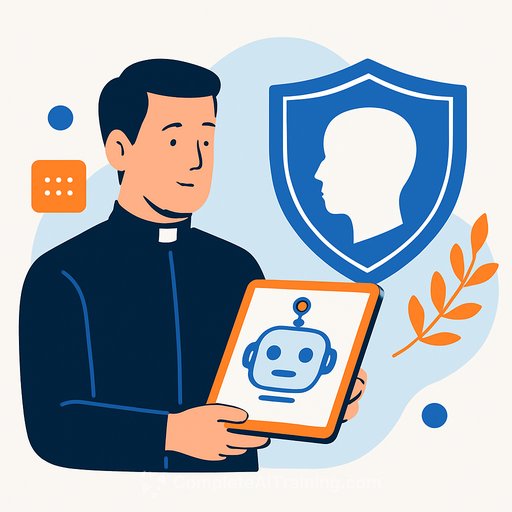Catholic Media Association issues AI guidelines: keep human dignity central
The Catholic Media Association (CMA) has released new AI guidelines that put human dignity, responsibility, and transparency at the center of how Catholic outlets use the technology. The message is clear: use AI to improve workflows, but keep people in charge.
The guidelines acknowledge AI can speed up translations, transcriptions, data analysis, and audience engagement. But the CMA stresses a moral framework rooted in Catholic social teaching - human dignity, the common good, solidarity, and a preferential option for the poor - should guide every decision.
Why this matters for PR and communications
- Trust depends on clarity. Audiences expect to know where and how AI is used.
- Legal and reputational risk is real: copyright, privacy, and deepfakes can damage credibility fast.
- AI can reduce context and empathy. That's a problem in faith-based and values-driven messaging.
- Workforce impact is part of the ethics. Automation without protection, training, or re-skilling undercuts the mission.
What the CMA is asking members to do
- Disclose AI use in editorial and creative content. Be specific about where it's used and where it isn't.
- Keep humans accountable. AI outputs should be supervised, edited, and fact-checked by people before publication.
- Watch for bias and stereotyping in large language models. Build systematic review into your workflow.
- Protect intellectual property. Do not publish AI content that infringes on copyright or plagiarizes.
- Reject deceptive media. Don't distribute AI-generated images or audio that distort reality; use chain-of-custody practices to verify assets.
- Safeguard data, especially for minors and vulnerable adults. Avoid entering sensitive or identifying information into public AI tools.
- Mind the environmental impact. Prefer energy-efficient hardware and carbon-efficient data centers where possible.
Context from the field
Major outlets are drawing similar lines. The New York Times bans AI-written articles and manipulated visuals while allowing AI for data analysis, headlines, summaries, translations, and recommendations. The Washington Post offers an AI assistant with a disclaimer that it can make mistakes and points readers to source citations.
Within Catholic discourse, recent teaching highlights that moral agency must remain with humans at every stage of AI design, deployment, and use. The CMA echoes this: AI should serve people - not replace human judgment, empathy, or responsibility.
Practical policy starters you can copy
- Scope statement: "We use AI for research assistance, transcription, translation, data summaries, and internal drafts. We do not publish AI-generated text, images, or audio without human review and approval."
- Disclosure line: "This piece includes AI-assisted elements reviewed and verified by our editorial team."
- Corrections protocol: "If AI assistance introduces errors, we correct the record promptly and update the disclosure."
- Creative guardrail: "No AI-generated visuals of real people or sacramental moments. Archival and sacramental imagery requires verified chain of custody."
30-day implementation checklist
- Inventory where AI is already used across your team and vendors.
- Define an approved tool list and uses (what's allowed, what's not, and why).
- Add a disclosure standard to your style guide and CMS templates.
- Build human review into the workflow: fact-checking, context checks, and bias reviews.
- Create a verification protocol for images, audio, and video, including chain-of-custody documentation.
- Run a privacy review: scrub sensitive data, especially for minors and vulnerable adults, from prompts and datasets.
- Consult legal on copyright, licensing, and training data exposure risks.
- Add an AI incident playbook for misinformation or deepfake crises, including takedown and public response steps.
- Evaluate environmental impact with vendors; request data center energy and water efficiency details.
- Train staff on safe, responsible AI use and provide ongoing refreshers.
Guardrails for minors and vulnerable adults
- Never input identifying details into public AI tools.
- Mask, aggregate, or omit sensitive data by default.
- Use private, access-controlled systems for any content involving pastoral care, health, or education contexts.
- Document consent for all data use and retention policies.
Workforce and mission
The CMA flags the risk of job cuts from automation. PR leaders should pair AI adoption with upskilling and role redesign so teams move up the value chain - more strategy, more human connection, more field reporting and stakeholder engagement.
If you're building a training plan, consider mapping skills by role and setting quarterly goals. For structured options, see curated AI courses by job.
Bottom line
Use AI where it speeds the work, but keep people accountable at every step. Be transparent, protect the vulnerable, respect IP, and verify media before it reaches the public.
Approach AI thoughtfully and deliberately. That's how you protect human dignity while shipping better communications, week after week.
Your membership also unlocks:






